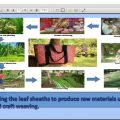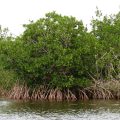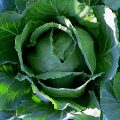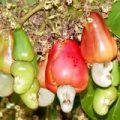The Ecosystems Research and Development Bureau of the Department of Environment and Natural Resources (ERDB-DENR) had developed a promising plant microorganism that can help trees to survive hostile soil conditions.
According to Dr. Henry A. Adornado, ERDB acting director, this plant organism called mycorrhiza is known to benefit plants by making sure that plants and trees survives in any soil condition. It is also cost-effective, environment-friendly and sustainable. Once it is inoculated in the roots, it will stay in the roots of the plants throughout its lifetime.
“This technology, commercially known as the Hi-Q Vam 1 is helping trees to grow much faster, doubling the rate compared to those without mycorrhiza,” said Adornado.
It was in 2000 when ERDB’s mycorrhizologist, Dr. Evangeline T. Castillo, led the collection of different species of mycorrhiza all over the Philippines in search of the right species that could be used in environmental rehabilitation programs.
According to Castillo, ERDB’s field experiments revealed that mycorrhiza plays a “conduit role” in poor soil conditions by actively spreading its roots to obtain the needed nutrients of the plants to survive. Thus, in 2012, it has been patented as a utility model by the Intellectual Property Office (IPO) of the Philippines.
“Since many of the marginal areas such as upland, grassland, mined-out and other areas in the country have been degraded due to unsustainable farming, grazing, and ore extraction activities, the mycorrhiza that is naturally available in many plant species have been lost from the soil,” Castillo further narrated.
With this, DENR has recognized the potential of mycorrhiza technology to rehabilitate the country’s degraded ecosystems. Hi-Q Vam 1 is now being used in the production of quality planting materials for the National Greening Program (NGP) which aims to plant 1.5 billion trees in 1.5 million hectares degraded areas in the country from 2011-2016.
For 2015 and 2016, ERDB will produce 411 metric tons (MT) of Hi-Q Vam 1 under the supervision of Carmelita Mojica, a research specialist at ERDB. This bio-fertilizer will be inoculated in the planting materials for the NGP to ensure the high survival of planted seedlings.
According to Angelito Exconde, assistant national coordinator and executive officer of NGP, “mycorrhiza serves as cheap source of promoting plant growth.” Even with an
upfront cost of 20 centavos per application of mycorrhiza per tree, the investment pays off as trees survive and generate income over the years.
To address the need for Hi-Q Vam 1 inoculation in NGP’s quality seedlings, ERDB has already constructed facilities for the production of mycorrhiza.
These are located at ERDB’s production facility at the Science and Technology Park of the University of the Philippines in Los Banos, Laguna; Ramon Magsaysay Technological University (RMTU) in Botolan, Zambales; and Bohol Island State University (BISU) in Bilar, Bohol. With these facilities, ERDB can produce 500 to 1,000 MT of mycorrhiza annually for around four million seedlings.
###
For any questions or interview requests, please contact Melody Aguiba, 0999-573-7077, 0917-671-1596.






